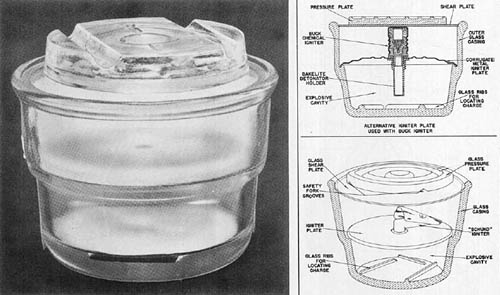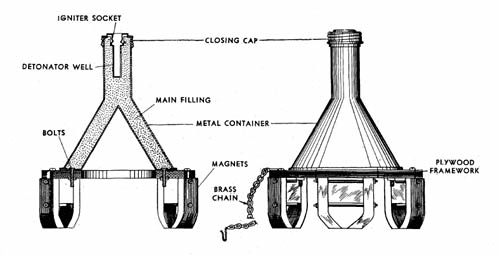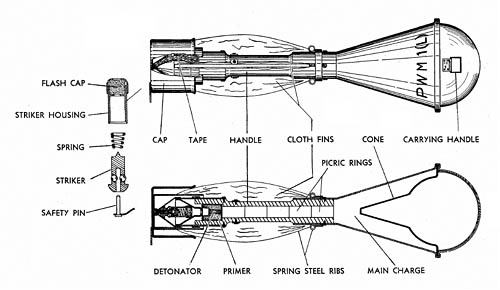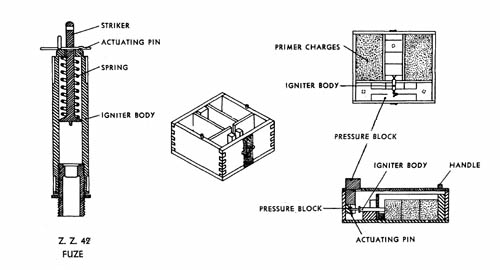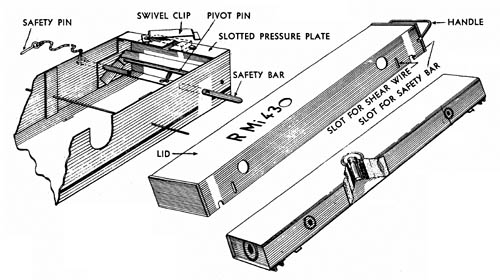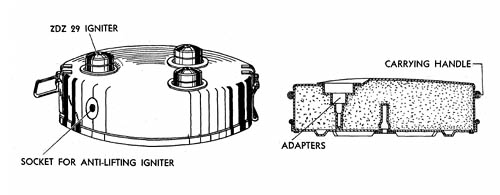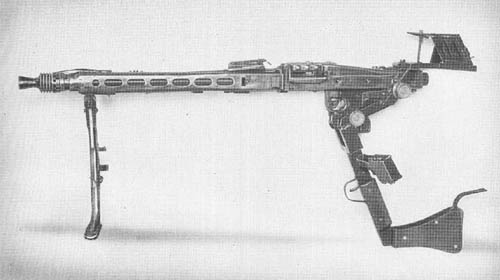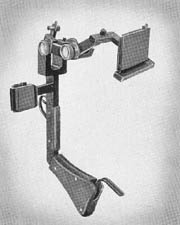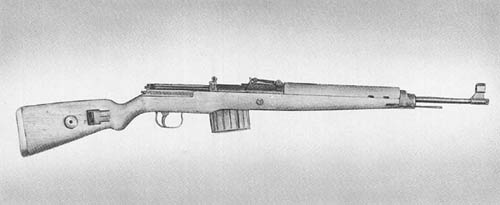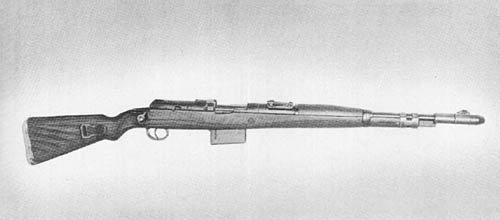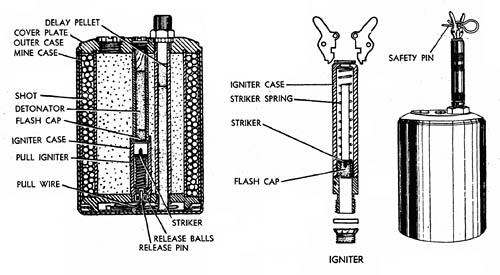
This anti-personnel mine is basically the same, both in construction and operation, as the S. Mi. 35 described on page 305. It consists of an outer casing and an inner cylinder which contains a T.N.T. charge surrounded by small shot. There are three threaded openings in the cover plate: one is used for pouring the charge into the mine; the second, which takes a S. Mi. Z. 44 igniter, opens into a tube containing a 4.5 second delay pellet and a propellant consisting of three grams of fast burning gun powder; the third which is closed by a wooden plug leads into a tube containing a detonator, a flash cap, and a pull igniter. The pull igniter, located at the base of the tube, contains a spring-loaded striker held in place by two steel balls which are prevented from moving by a pin in the base of the igniter. The pin is attached to the base of the outer case by approximately three feet of coiled wire.
The S. Mi. Z. 44 is a percussion igniter differing from the usual percussion type in that it has two small wings which, when forced outward by pressure from above or tension through trip wires from the side, release the spring-loaded striker to fire the cap. A pressure of 21 pounds or a tension of 14 pounds will actuate the igniter.
Operation of the igniter initiates the 4.5-second delay pellet which fires the propellant throwing the mine upwards. When the coiled wire is fully extended (about 2 1/2 feet above ground level) it pulls the pin from the igniter, enabling the retaining balls to move inward and release the striker to fire the flash cap, detonator, and bursting charge.
SPECIFICATIONS
| Height | 5 1/8 ins. | |
| Height with igniter | 8 7/8 ins. | |
| Diameter | 4 ins. | |
| Weight | 8.8 lb. | |
| Color | Camouflage yellow |
German: p. 304.8
